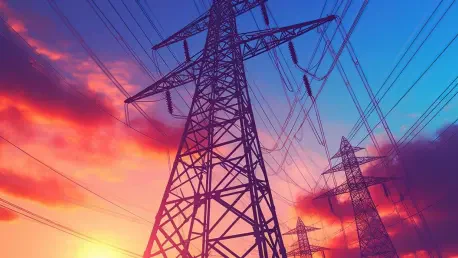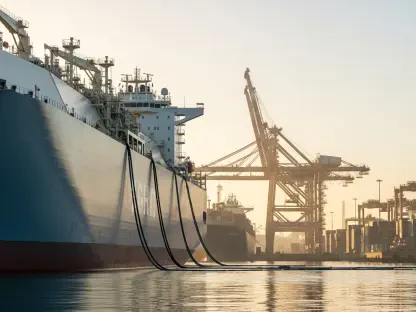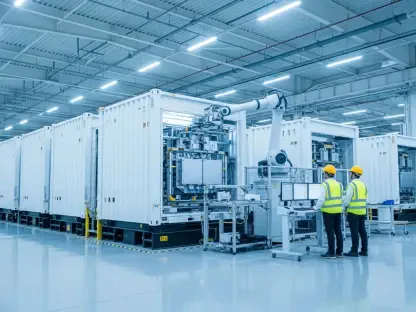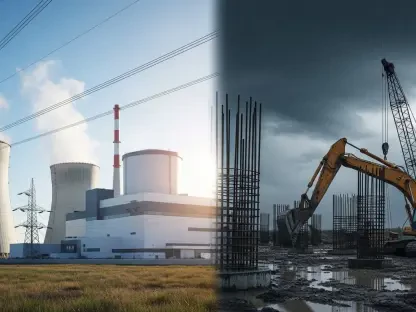I’m thrilled to sit down with Christopher Hailstone, a seasoned expert in energy management and renewable energy, whose deep knowledge of electricity delivery and grid reliability offers unparalleled insights into the evolving energy landscape. As a utilities specialist, Christopher has a unique perspective on how companies like E.ON are navigating the European energy transition through regulated infrastructure, digital innovation, and strategic policy engagement. In our conversation, we explore the financial stability provided by regulated assets, the transformative power of digital tools in grid management, the importance of shaping energy policies, and the broader shift toward renewable integration and market expansion. Let’s dive into this enlightening discussion.
How does a strong regulated infrastructure contribute to financial resilience for a major energy utility like E.ON?
Regulated infrastructure is really the backbone of financial stability for a company like E.ON. With a massive asset base, we’re talking about billions of euros tied up in networks that span across Europe, providing a steady, predictable revenue stream. Since most of these operations fall under regulated conditions, the income is often inflation-protected, which shields the company from economic volatility. This setup allows for consistent cash flow, which is critical for funding ongoing operations and planning future investments without the uncertainty that comes with market-driven sectors.
What are the key advantages of operating under such a high level of regulatory oversight?
When 90% of your business is regulated, you gain a level of certainty that’s hard to match in other industries. It means that revenues aren’t subject to wild swings based on market whims; instead, they’re tied to agreed-upon tariffs and frameworks. This predictability helps in long-term planning and securing financing at favorable rates. It also builds trust with investors who see this as a lower-risk proposition, knowing that the company isn’t fully exposed to the ups and downs of competitive markets.
Can you elaborate on how significant investments in infrastructure pave the way for sustained growth?
Absolutely, large-scale investments, like the €8.6 billion E.ON has planned for 2025, are a game-changer. This kind of capital expenditure isn’t just about maintaining existing systems; it’s about expanding and modernizing the grid to meet future demands. It drives growth by increasing the asset base, which in turn boosts earnings over time. More importantly, it positions the company to handle the rising integration of renewables, ensuring they’re not just keeping up but staying ahead in the energy transition.
How does digital innovation transform operational efficiency in the energy sector?
Digitalization is revolutionizing how energy utilities operate. Take the concept of a digital twin for a power grid, for example. It’s a virtual model that mirrors the physical grid, using real-time data to simulate and optimize performance. This tech allows for rapid processing of connection requests and predictive maintenance, slashing downtime and costs. Tools like smart metering and AI-driven optimization further enhance efficiency by providing precise data on usage and grid health, enabling better decision-making and resource allocation.
In what ways does digitalization support the broader goals of integrating renewable energy sources?
Digital tools are crucial for managing the variability that comes with renewables like wind and solar. They allow for real-time monitoring and balancing of the grid, ensuring stability even when generation fluctuates. By optimizing grid operations, digitalization makes it easier to connect more renewable sources without overloading the system. It also supports demand-side management, helping to match supply with consumption patterns, which is essential as we move toward a cleaner energy mix.
Why is active engagement with regulatory bodies so critical for a utility company’s long-term strategy?
Engaging with regulators isn’t just about compliance; it’s about shaping the future. By actively participating in policy discussions, a company like E.ON can advocate for frameworks that support their investment plans and operational needs. This involvement helps ensure that regulatory changes align with business goals, reducing risks of unexpected disruptions. It also fosters a stable environment where the company can confidently plan for the future, knowing they’ve had a hand in crafting the rules of the game.
How has the shift away from fossil-based assets reshaped the strategic focus of energy utilities?
The pivot from fossil fuels to areas like renewable integration and e-mobility represents a fundamental reorientation. It’s about redefining the core business to align with global decarbonization goals. By shedding fossil-heavy operations, utilities can concentrate on building out regulated networks and sustainable infrastructure, like EV charging stations and smart grids. This shift not only aligns with environmental targets but also opens up new revenue streams in growing markets, positioning them as leaders in the energy transition.
What is your forecast for the role of digitalization in the energy transition over the next decade?
I believe digitalization will be the linchpin of the energy transition in the coming years. We’re going to see an explosion of data-driven solutions—think advanced analytics, machine learning, and IoT—all working together to create smarter, more resilient grids. These technologies will be critical for managing the complexity of a decentralized, renewable-heavy energy system. My forecast is that within a decade, digital tools will not just optimize operations but fundamentally redefine how energy is produced, distributed, and consumed, driving efficiency and sustainability to new heights.









